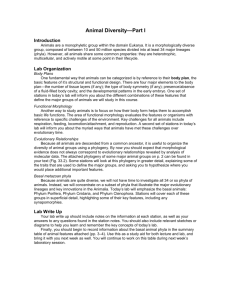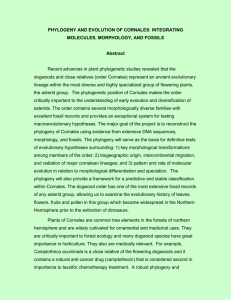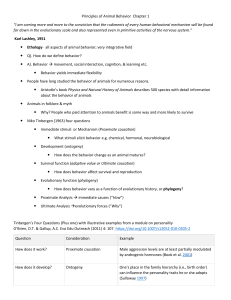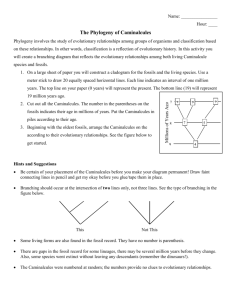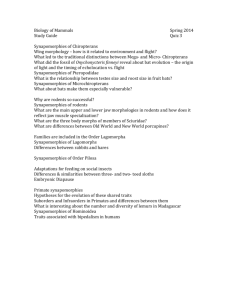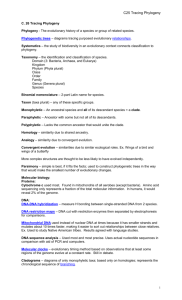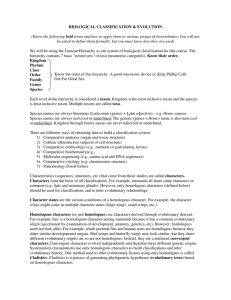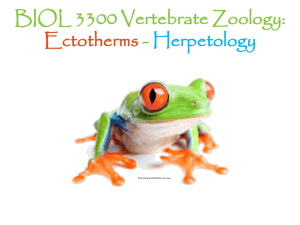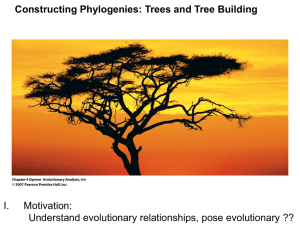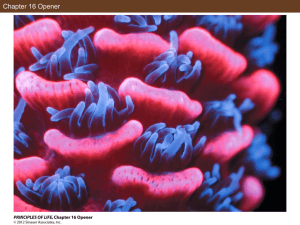doc
advertisement
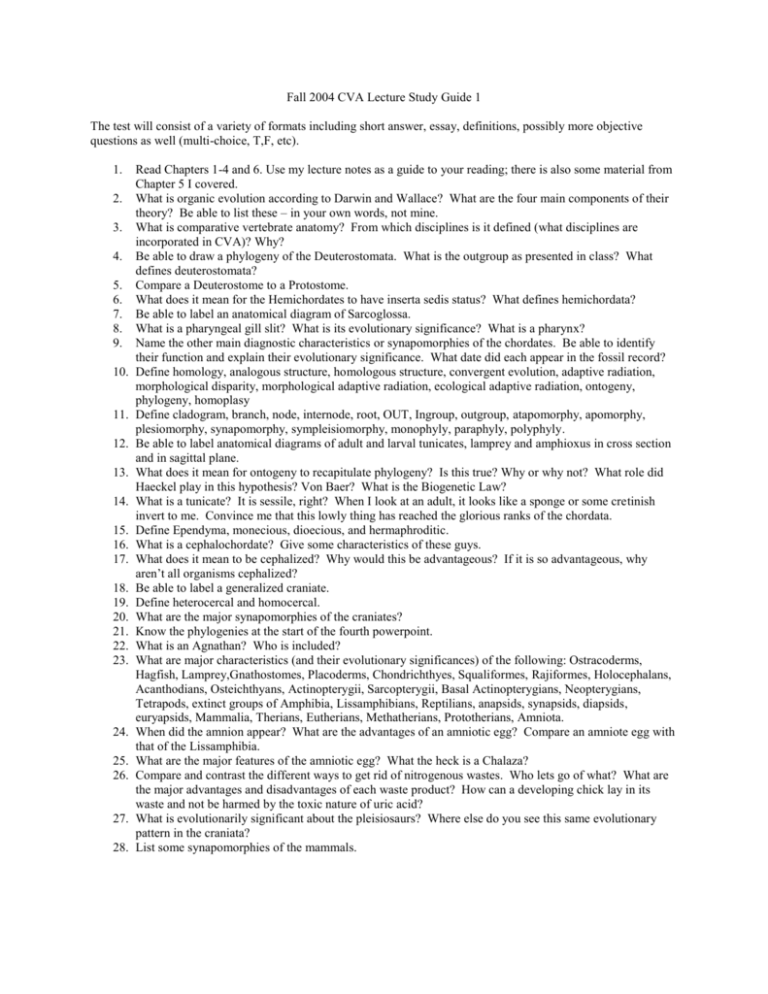
Fall 2004 CVA Lecture Study Guide 1 The test will consist of a variety of formats including short answer, essay, definitions, possibly more objective questions as well (multi-choice, T,F, etc). 1. 2. 3. 4. 5. 6. 7. 8. 9. 10. 11. 12. 13. 14. 15. 16. 17. 18. 19. 20. 21. 22. 23. 24. 25. 26. 27. 28. Read Chapters 1-4 and 6. Use my lecture notes as a guide to your reading; there is also some material from Chapter 5 I covered. What is organic evolution according to Darwin and Wallace? What are the four main components of their theory? Be able to list these – in your own words, not mine. What is comparative vertebrate anatomy? From which disciplines is it defined (what disciplines are incorporated in CVA)? Why? Be able to draw a phylogeny of the Deuterostomata. What is the outgroup as presented in class? What defines deuterostomata? Compare a Deuterostome to a Protostome. What does it mean for the Hemichordates to have inserta sedis status? What defines hemichordata? Be able to label an anatomical diagram of Sarcoglossa. What is a pharyngeal gill slit? What is its evolutionary significance? What is a pharynx? Name the other main diagnostic characteristics or synapomorphies of the chordates. Be able to identify their function and explain their evolutionary significance. What date did each appear in the fossil record? Define homology, analogous structure, homologous structure, convergent evolution, adaptive radiation, morphological disparity, morphological adaptive radiation, ecological adaptive radiation, ontogeny, phylogeny, homoplasy Define cladogram, branch, node, internode, root, OUT, Ingroup, outgroup, atapomorphy, apomorphy, plesiomorphy, synapomorphy, sympleisiomorphy, monophyly, paraphyly, polyphyly. Be able to label anatomical diagrams of adult and larval tunicates, lamprey and amphioxus in cross section and in sagittal plane. What does it mean for ontogeny to recapitulate phylogeny? Is this true? Why or why not? What role did Haeckel play in this hypothesis? Von Baer? What is the Biogenetic Law? What is a tunicate? It is sessile, right? When I look at an adult, it looks like a sponge or some cretinish invert to me. Convince me that this lowly thing has reached the glorious ranks of the chordata. Define Ependyma, monecious, dioecious, and hermaphroditic. What is a cephalochordate? Give some characteristics of these guys. What does it mean to be cephalized? Why would this be advantageous? If it is so advantageous, why aren’t all organisms cephalized? Be able to label a generalized craniate. Define heterocercal and homocercal. What are the major synapomorphies of the craniates? Know the phylogenies at the start of the fourth powerpoint. What is an Agnathan? Who is included? What are major characteristics (and their evolutionary significances) of the following: Ostracoderms, Hagfish, Lamprey,Gnathostomes, Placoderms, Chondrichthyes, Squaliformes, Rajiformes, Holocephalans, Acanthodians, Osteichthyans, Actinopterygii, Sarcopterygii, Basal Actinopterygians, Neopterygians, Tetrapods, extinct groups of Amphibia, Lissamphibians, Reptilians, anapsids, synapsids, diapsids, euryapsids, Mammalia, Therians, Eutherians, Methatherians, Prototherians, Amniota. When did the amnion appear? What are the advantages of an amniotic egg? Compare an amniote egg with that of the Lissamphibia. What are the major features of the amniotic egg? What the heck is a Chalaza? Compare and contrast the different ways to get rid of nitrogenous wastes. Who lets go of what? What are the major advantages and disadvantages of each waste product? How can a developing chick lay in its waste and not be harmed by the toxic nature of uric acid? What is evolutionarily significant about the pleisiosaurs? Where else do you see this same evolutionary pattern in the craniata? List some synapomorphies of the mammals.
